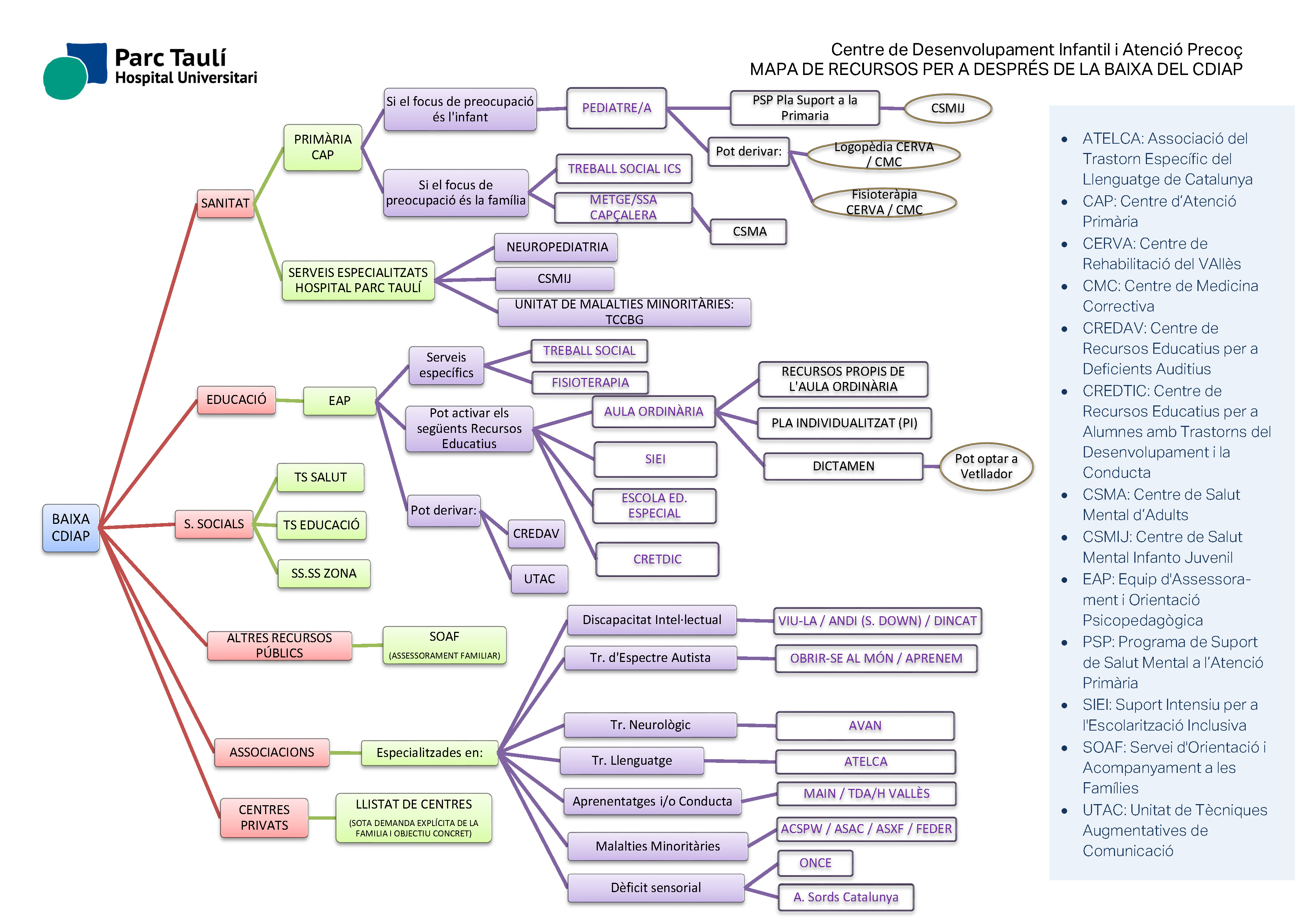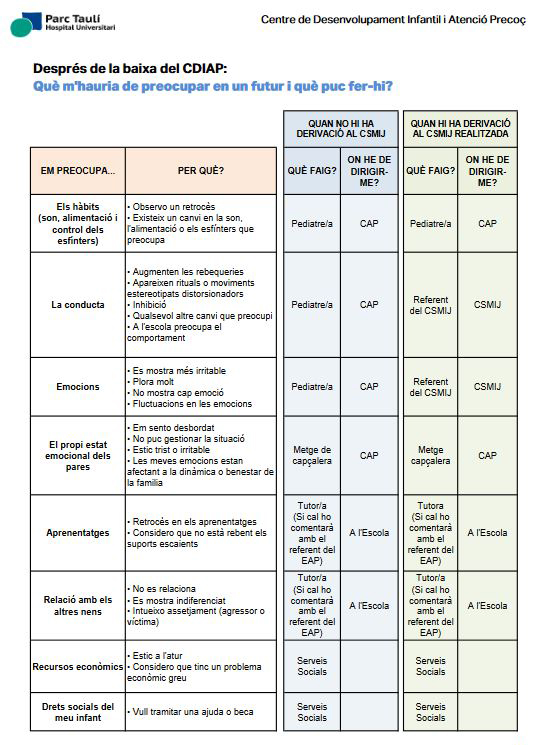The time of leaving the CDIAP can be a difficult time for some families because of the feeling of leaving a service in which they have been cared for since the beginning of the first concerns for the development of their children.
It is important to note that CDIAP plays a key role in the first 3 years of life, as it is the period in which difficulties begin to be expressed and the plasticity of the nervous system is at its maximum. Early diagnosis and intervention require a service that can provide a rapid response, as well as integrating all clinical specialties related to neurodevelopment. At this stage, it is important to be able to care for children and their families in a specialized, global and early way.
As the child gets older, his neurodevelopment also becomes more specialized and his environment expands, especially when he begins his educational process with the entrance to school. From now on, new services and resources will be launched for all those children with specific educational needs.
What are the possible resources?
What should I look forward to in the future and what can I do about it?
How are these new resources being implemented?
During the CDIAP care period, professionals establish channels of coordination with the health, education and social services in order to initiate a joint support work:
- Health Services: with the child's pediatrician.
- Educational Services: As the educational environment, through the Psychopedagogical Advice and Guidance Team (EAP), assesses the needs and incorporates the different resources, the therapeutic response of the CDIAP is adapting and lowering the level of intensity until the final discharge is given.
- Social Services: through Social Work of the CDIAP coordination is maintained with the different devices of social services. In cases where it is deemed necessary, specific referrals are made both during the CDIAP care period and at the time of termination.
What other professionals do we still have as a reference?
If families have any concerns, they can turn to leading professionals who are already familiar with their children's development process and who have maintained coordination with the CDIAP prior to the discharge process. All children have a pediatrician of reference (either in their CAP or in private health) and a professional referring to the school (Education - EAP) and, if necessary, support from basic social services. .
These leading professionals in Health, Education and Social Services will be adapting resources to the changing needs of each child.
What if specific follow-up is needed after the CDIAP stage?
Some children may need specific attention beyond school; in these cases, the referral to the indicated specialized center will be made from the CDIAP.

